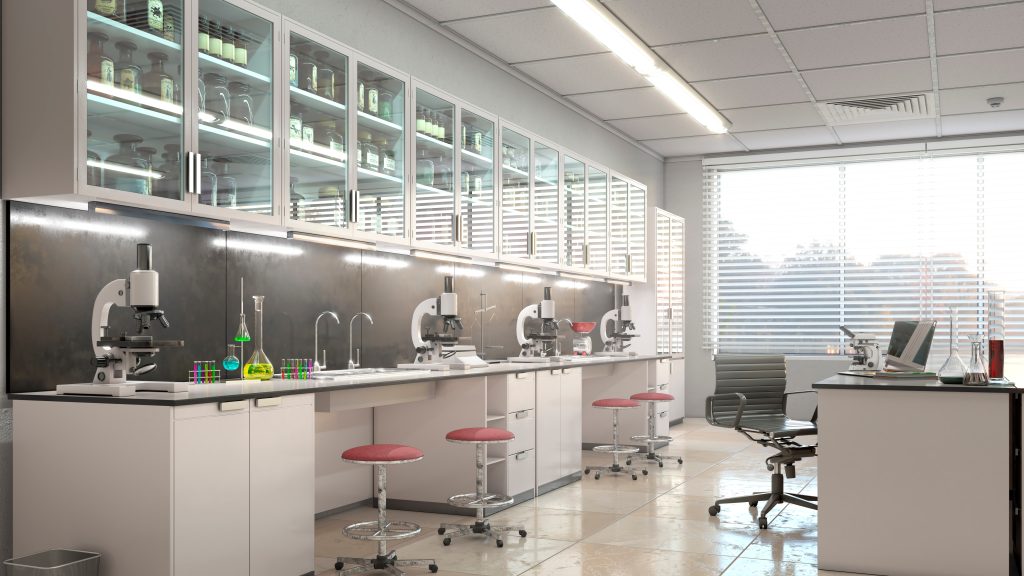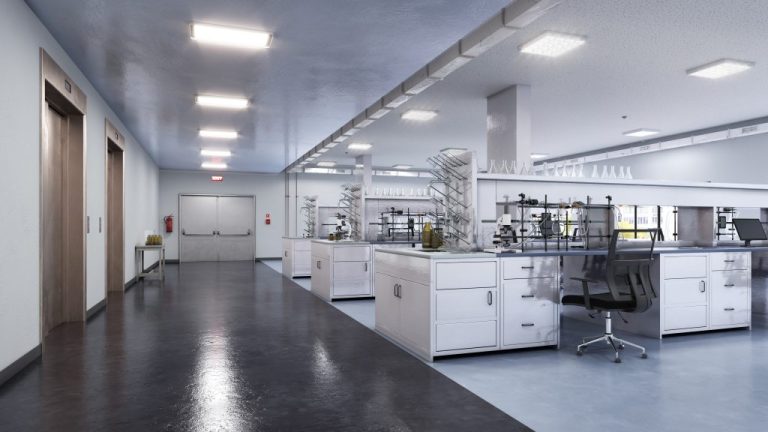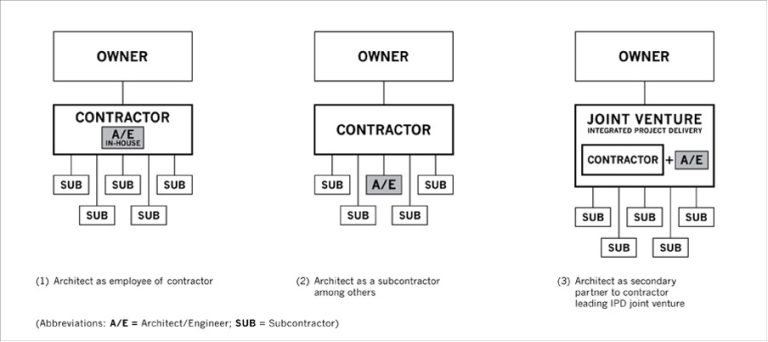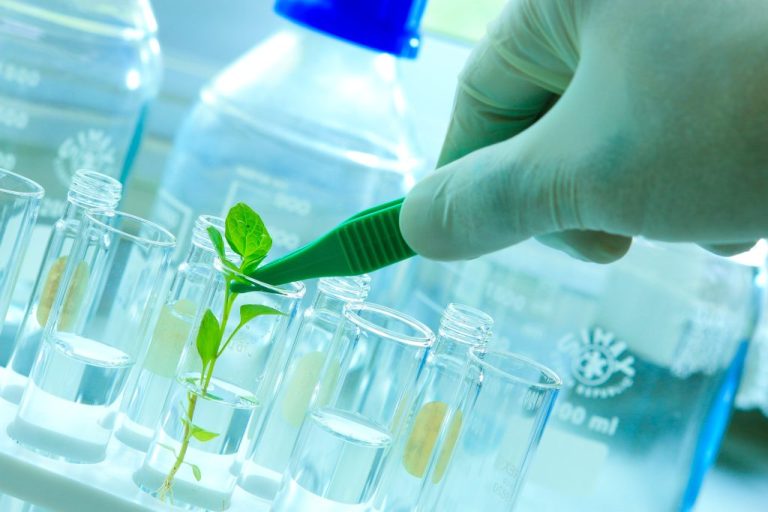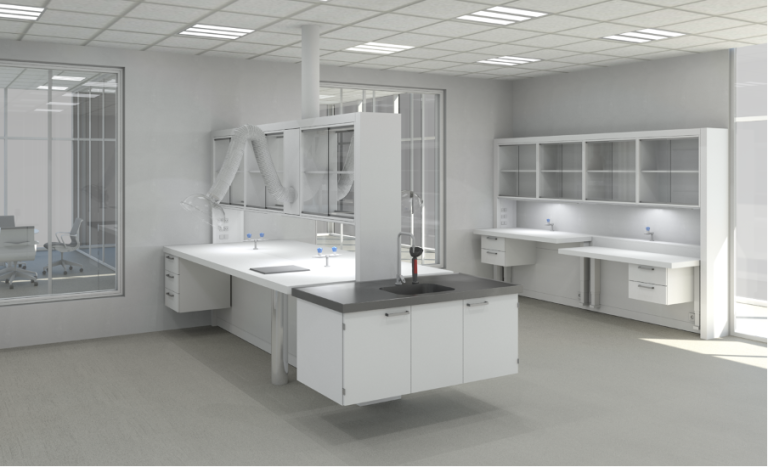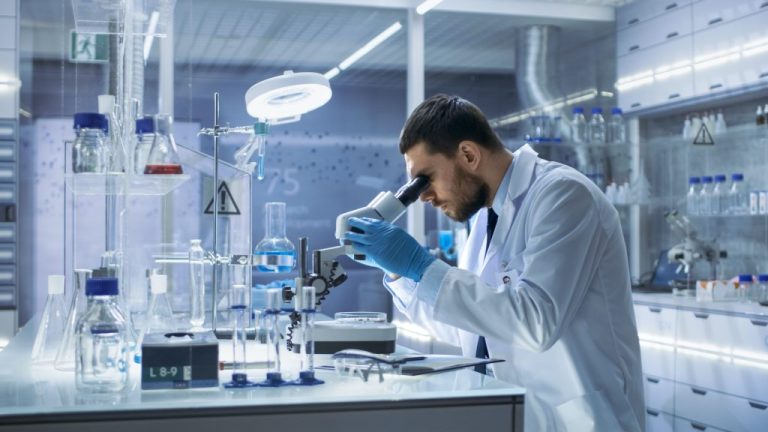What Makes a Laboratory Effective?

A laboratory is and its functionality is a direct product of the design and build process. Laboratory designing requires a lot of forethought and a thorough understanding of the laboratory work to be done. Each laboratory needs to be designed for the exact work that will be performed and that’s why all relevant stakeholders should be included in the planning of the laboratory and the design process.
In this article we will tell you five consideration that makes a laboratory more effective.
Our core ranges of furniture & equipment deliver value & performance, fully backed-up by trained product managers. With our turn-key project management offering, you can choose a complete design & build service that includes furniture design, procurement, and installation.
Let us help you create a workspace that reflects your brand, drives your processes & supports your business goals.
1. Choosing the right location
First thing to consider when designing an effective laboratory is the location. Whether you are building from scratch, converting office spaces into laboratory, or looking for a new company location with laboratory space, the location is key.
If you are building from scratch, you should consider the area in which to build – can the laboratory staff and suppliers easily get there? And what surrounds the site? And how does this align with your company’s brand and wishes? Typically, you’ll find laboratories in fairly remote industrial locations, but bear in mind that for your employees’ sake that it’s easy to commute to the location.
A good location can be expensive, but on the other hand it will be very ineffective to have your laboratory staff come to work late, because the laboratory is located far away from everything.
If you are converting existing spaces into laboratory, you should consider where to place the laboratory in the building. Should the laboratory be in a central place of the building, or should it be located more privately away from the rest of the company’s space? What will also determine this is the possibilities for extraction and ventilation since it can be difficult to built proper ventilation in some places and buildings.
A good location for at laboratory is typically somewhere in the building where the ceilings are high, there is natural light and (possibilities for) good airflow.
Our core ranges of furniture & equipment deliver value & performance, fully backed-up by trained product managers. With our turn-key project management offering, you can choose a complete design & build service that includes furniture design, procurement, and installation.
Let us help you create a workspace that reflects your brand, drives your processes & supports your business goals.
2. Proper inventory and storage
Having the right inventory and storage for your laboratory is key for a successful research facility. With the right equipment, inventory, and storage the laboratory staff will have a much more effective working environment.
What determines the inventory is the work being done in the laboratory. Below you’ll find a list of questions to consider when selecting proper inventory:
- Do you need adjustable tables and workstations?
- What surfaces do the experiments require?
- What chemical storage is needed?
- Do you need fume hoods, refrigerators, freezers, safety showers e.g.?
- Do you need workstations on wheels for flexible use of the laboratory space?
The list of questions to consider goes on and you will narrow it down knowing what work will be done in the laboratory. Generally speaking, laboratory inventory should be easy to clean and disinfect in order to keep a high level of hygiene.
3. Flexibility
A flexible laboratory can ensure your company’s future growth. The experiments in the laboratory often change over time and thus the laboratory requirements.
The laboratory should be structured and designed so that it can easily be adapted to suit different research projects with different requirements. One way of ensuring flexibility in a laboratory is choosing laboratory benches on lockable wheels, which will give your laboratory the maximum portability and adaptability.
A flexible laboratory is also an effective one since the laboratory is designed to convert and adapt whenever the character of the experiments changes. The staff is able to change the work stations around if they find it to be more fitting for the current experiments, giving the laboratory the possibility for personalization, since they are able to “design” their own work spaces.
Read our article about the 10 most critical areas to consider when designing a laboratory. We elaborate on the benefits on planning for flexibility in point 5.
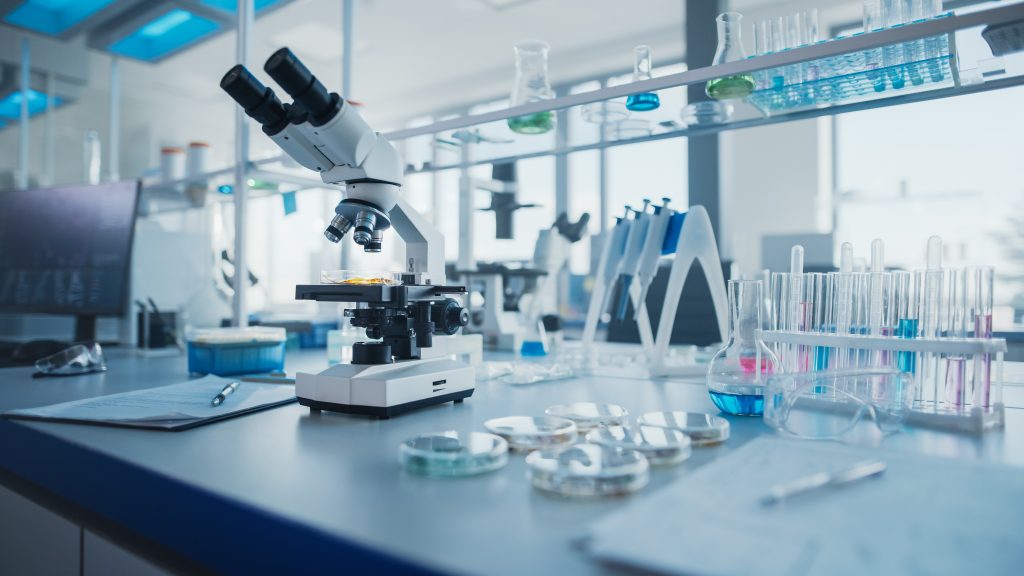
4. Layout
In continuation of the above the layout needs to be considered thoroughly even in laboratories with benches on wheels. A layout that is compatible with the work processes will ensure a much more effective workflow. So having the laboratory staff layouting the laboratory can be highly effective since they are the specialists in their own work.
Other things to consider where to place in the laboratory is waste disposal units, emergency exits, first aid supplies, eye wash stations (if needed), fire extinguisher, restroom location and so on. Furthermore, it’s important to think about the accessibility of the different workstations and where to place equipment for different research experiments. For instance, it is preferable to consider placing work areas for related processes within close proximity to one another. And even more importantly, you should consider which processes cannot be performed within close proximity due to the risk of contamination for instance.
5. Safety precautions and regulations
There are several legal requirements that laboratory spaces need to live up to, including proper ventilation and extraction (depending on the type of work), fire extinguisher, emergency exits e.g.
Laboratory safety might be one of the most important things when designing an effective workspace. When all the safety precautions are accounted for, your laboratory staff won’t have to worry about where they’ll find the protective equipment, the eye wash station, or the fire extinguisher when and if an accident happens. An important thing to consider is safety signs, that will guide the laboratory staff and ensure that they know how to handle dangerous specimens or liquids for example.
Read our article about the top five safety measures to learn more about how to design a safe lab.
Need help designing an effective laboratory?
We can help you designing your new effective laboratory or guide you in how you can optimize your existing laboratory spaces to be more effective for your work processes. Fill out our contact form and we will contact you shortly to learn more about your laboratory plans.

